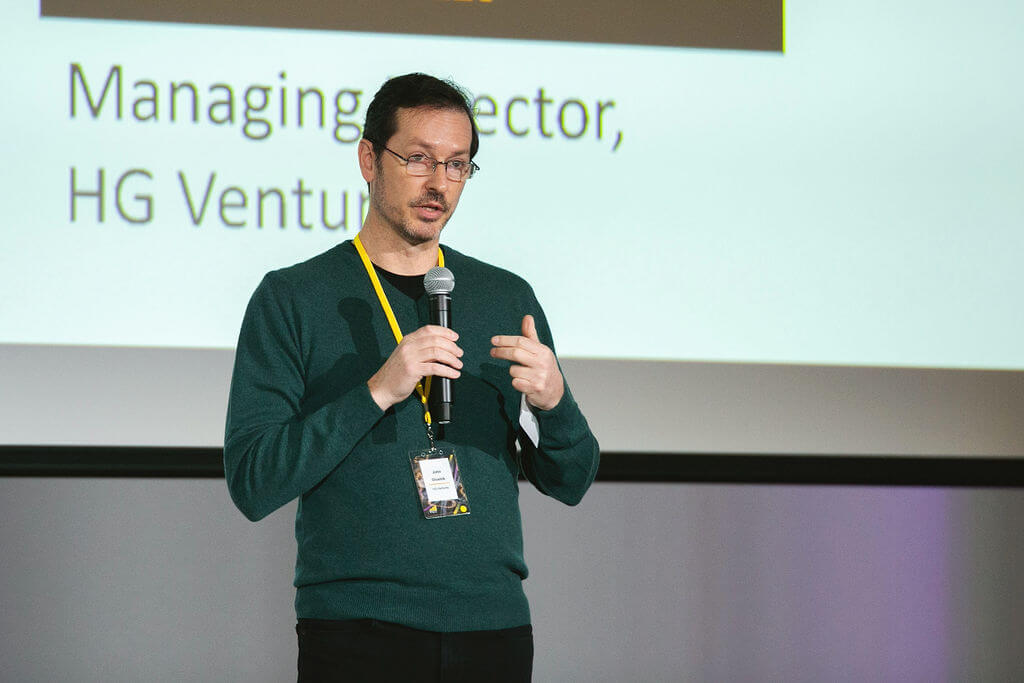Managing Director John Glushik recently joined a panel with representatives of other corporate VC firms to discuss “Transformational Change and the Path Forward” as part of Global Corporate Venturing’s GCVI Summit. Here we summarize the key take-aways from the event.
Corporate venture investing has matured into a vital tool for driving innovation, extending corporate capabilities, and generating financial returns. But success in this space isn’t guaranteed. Too often, corporate venture arms struggle to balance strategic alignment with entrepreneurial autonomy, or they lack the internal resources needed to turn investments into meaningful partnerships.
It is possible to identify a number of themes across the industry, and lessons that may be applied broadly to any corporate-backed investment program:
Investing Where You Can Truly Add Value
Corporate venture arms often talk about providing “more than capital,” but making that promise a reality requires a clear strategy. The most effective programs focus investments in areas where the parent company can offer something unique—whether that’s industry expertise, infrastructure, distribution networks, or technical resources.

For example, venture groups backed by large industrial or scientific firms can provide startups with access to R&D capabilities, testing facilities, and domain experts that would otherwise be out of reach. This type of engagement not only de-risks investments but also accelerates startup growth in ways that financial capital alone cannot.
The takeaway? Be intentional about where and why you invest—not just to check a strategic box, but to create opportunities for meaningful collaboration. The best innovations are typically driven by the best entrepreneurs. The best entrepreneurs can choose their investor partners and they will gravitate toward investors who add tangible value and prioritize the success of their portfolio companies.
The Hidden Challenge: Enabling Corporate-Startup Interactions
Many corporate venture programs underestimate the friction involved in connecting startups with business units. Large organizations move at a different pace than startups, and even the best-intentioned investments can stall if there isn’t a clear mechanism for engagement.
One approach that has proven effective is dedicated roles focused on facilitating these interactions. Some venture arms, HG Ventures included, now employ Platform Managers—team members whose primary job is to help portfolio companies navigate the complexities of working with a corporate parent while also advising the corporate partners on how to most effectively engage with entrepreneurs. This structured approach helps ensure that startups can tap into corporate resources without getting lost in internal bureaucracy.
Without this kind of intentional support, even the most promising investments can struggle to generate real impact.
Entrepreneurial Freedom: A Key to Attracting Top Founders
One of the most common pitfalls in corporate venture is exerting too much control over startups. While corporate priorities matter, successful venture programs recognize that entrepreneurs choose their investors carefully—and they tend to avoid those who impose too many constraints.
The best programs take a partnership-first approach, offering value while allowing startups to operate independently. This means:
- No forced commercial agreements that lock startups into suboptimal partnerships;
- Flexible investment terms that align incentives rather than dictating strategy;
- A long-term view that supports growth rather than short-term corporate KPIs.
The best founders have options. Corporate investors that offer flexibility and real support—not just oversight—are the ones that attract the strongest entrepreneurs.
Corporate Stability as an Unrecognized Advantage
Venture firms often focus on agility, but stability can be just as valuable. Corporate-backed investors with a consistent leadership structure and long-term vision can provide startups with reliable, patient capital—a major advantage over investors who may be driven by short-term fund cycles, shifting strategies or frequent leadership turnover.
This stability allows corporate venture arms to:
- Commit to longer-term partnerships rather than being tied to quarterly results;
- Build institutional knowledge, ensuring a more thoughtful approach to investment and portfolio support;
- Maintain strategic consistency, so startups don’t find themselves navigating shifting corporate priorities.
Not every corporate venture group benefits from this kind of stability, but those that do should leverage it as a competitive strength.
Corporate venture investing is at its best when it is structured, consistent, and designed for long-term success. Programs that integrate well with their parent organizations—without restricting entrepreneurs—are the ones that deliver the greatest impact.
As the corporate venture landscape continues to evolve, the most successful investors will be those that recognize venture is more than just writing checks—it’s about building meaningful, value-driven partnerships.
Interested in watching the whole panel? Watch the video here.










